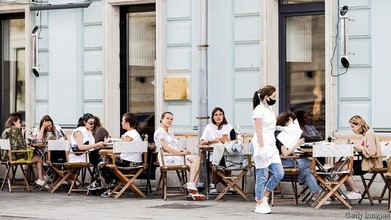The real economy is surprisingly resilient too. True, Russian consumer prices have risen by more than 10% since the beginning of the year, as the rouble’s initial depreciation made imports more expensive and many Western companies pulled out, reducing supply. The number of firms late on their wage payments seems to be growing.
But “real-time” measures of Russian economic activity are largely holding up. Total electricity consumption has fallen only a smidge. After a lull in March, Russians seem to be spending fairly freely on caf����s, bars and restaurants, according to a spending tracker run by Sberbank, Russia’s largest bank. On April 29th the central bank lowered its key interest rate from 17% to 14%, a sign that a financial panic which began in February has eased slightly. The Russian economy is undoubtedly shrinking (see bottom chart), but some economists’ predictions of a GDP decline of up to 15% this year are starting to look pessimistic.


